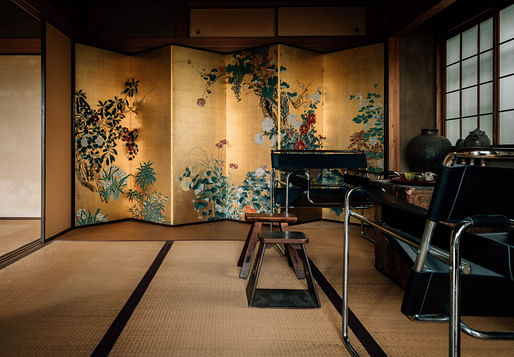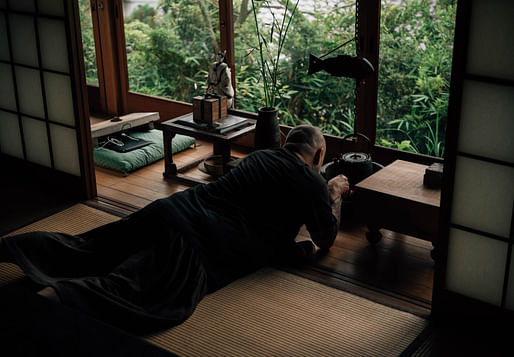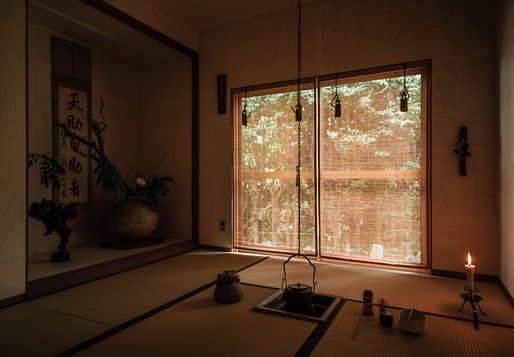
Ukraine-based MAKHNO Studio has completed work on a residence in Kyoto, Japan inspired by “sado,” a traditional Japanese tea ceremony. The century-old dwelling has been refurbished with attention to its history and the preservation of authentic elements while “adding a drop of Ukrainian color to the Japanese context.”

The experience begins at the house's entrance, marked by a small tea garden named “roji.” Adorned with Japanese ritual stones and Ukrainian DIDO art sculptures from the MAKHNO workshop, the roji garden sets the tone for a tranquil visit, whose “good entities protect the house from sad thoughts and uninvited guests.”

Upon entry through the “genkan,” or entrance hall, guests are greeted by a collection of Japanese and Ukrainian art. The main living area, segmented by a traditional Japanese screen known as “byobu,” serves multiple functions, showcasing art and calligraphy tools and accommodating overnight guests with traditional futons.

The highlight of Kyoto House is the “chashitsu” or tea room, transformed from a bedroom into an authentic setting for the tea ceremony, adorned with new tatami and Japanese “vashi” paper. The delicate tea performance is conducted by the house's owner, a dedicated and skilled practitioner of the art of tea.

“[...] the tashitsu leads you to its center, where the 'ro,' a special fire for making tea, is located,” the studio explains. “It never goes out. Above the ro, you see a hanging teapot, and the owner is skillfully handling it. The tea performance does not tolerate idle chatter. Therefore, in order to tune the spirit and soul, the host invites you to immerse yourself in meditation, contemplating the tokonoma.”

The house's extensive art collection includes ceramic works from different schools and periods, such as Bidzen and Shigaraki, alongside remarkable Ukrainian ceramics. Handcrafted pieces from MAKHNO workshops and artwork by notable Ukrainian artists such as Serhii Radko and Slavko Odarchenko enhance the multicultural aesthetic of the house. Meanwhile, authentic elements retained during the renovation include original tatami mats and textured clay wall surfaces.

“Looking at the diverse and restrainedly exquisite art collection of KYOTO HOUSE, you don't even notice that the house is enveloped in twilight,” the studio adds. “And while you are admiring the amazingly crafted DIDO, the owner of the house is laying out your futon in preparation for the evening sado.”
No Comments
Block this user
Are you sure you want to block this user and hide all related comments throughout the site?
Archinect
This is your first comment on Archinect. Your comment will be visible once approved.